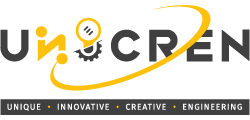Mastering Moisture: A Comprehensive Guide to Humidity Sensors and Beyond
Introduction: Humidity sensors are critical components in many different applications that fall under the domain of precision and control. Knowing the subtleties of humidity sensing technologies is essential for applications ranging from industrial settings to handheld devices and HVAC systems. Come along with us as we take a tour through the world of humidity sensors, looking at the various uses, techniques for calibration, and most recent advancements.
1. Humidity Sensors Unveiled
Study the basic operation of humidity sensors to gain insight into how these devices detect the amount of moisture in the air by understanding their workings. Learn about the several kinds of humidity sensors, like resistive and capacitive, and their unique benefits in different settings.
2. Calibrating Precision: The Humidity Calibrator
Delve into the significance of humidity calibration in ensuring accurate and reliable measurements. Uncover the role of humidity calibrators in fine-tuning sensors, maintaining precision, and contributing to the credibility of data collected in diverse industries.
3. Logging the Data: Humidity Data Loggers
Explore the ways that humidity data loggers are transforming the way that we track and document humidity levels throughout time. These loggers provide vital data for analysis, quality assurance, and process improvement in both industrial and research settings.
4. Handheld Precision: Humidity Hand-held Meters
Study the portability and flexibility of handheld meters for on-the-go humidity measurement. These small gadgets are a valuable asset in many different industries since they provide fast and precise readings, making them perfect for spot checks and fieldwork..
5. Industrial Insights: Humidity Sensors for Industrial Applications
Discover the unique function of humidity sensors in industrial environments. Learn how these sensors aid to assuring efficiency and product integrity by maintaining optimal conditions for manufacturing processes, storage, and quality control.
6. HVAC Harmony: Humidity Sensors for HVAC
Investigate the importance of humidity sensors in heating, ventilation, and air conditioning (HVAC) systems. Investigate how these sensors contribute to the creation of comfortable interior settings, the improvement of energy efficiency, and the overall performance of HVAC systems.
7. Versatile Modules: Humidity Modules and Probes
Learn how humidity sensors may be integrated into a range of systems and applications thanks to their modular design. Examine how humidity probes and modules offer customization and flexibility to meet the particular needs of various sectors.
8. Cutting the Cord: Humidity Wireless Sensors
With wireless humidity sensors, you can go forward and do away with the limitations of wired solutions. Examine the ways in which these sensors facilitate easy integration into IoT (Internet of Things) ecosystems, real-time data access, and remote monitoring.
Conclusion: Navigating the Humidity Landscape
Finally, our comprehensive guide to humidity sensors has revealed the device’s multidimensional nature. The realm of humidity sensing is varied and ever-changing, ranging from calibration to industrial applications and wireless advances. Understanding humidity sensors is critical to obtaining precision and control, whether you’re optimizing industrial operations or designing a comfortable living area. Keep an eye out for further improvements in this critical technology, which will shape how we measure and control moisture in our surroundings.




